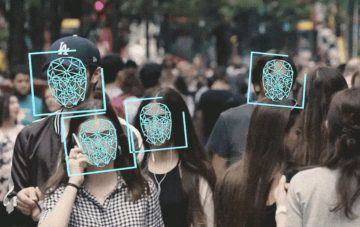Rachel Connolly in The Baffler:
 RECENTLY, some of my friends have started using their faces to pay for things. Not by charming strangers in bars, but instead by using the iPhone Face ID feature, which has users “glance” at their phone to make a contactless payment. The glance is, in reality, usually a close encounter of phone and face.
RECENTLY, some of my friends have started using their faces to pay for things. Not by charming strangers in bars, but instead by using the iPhone Face ID feature, which has users “glance” at their phone to make a contactless payment. The glance is, in reality, usually a close encounter of phone and face.
Face ID uses Automated Facial Recognition (AFR): every time you use it to make a payment, the Apple TrueDepth camera takes a picture of your face, creates a two-dimensional “map” of it by charting the position of facial features over thirty thousand data points, and then compares this to Apple’s stored image of your face. This means every time you use Face ID, Apple anonymously collects data including, but not limited to: the product purchased, the approximate price paid, where and when you bought it, and your facial expression while doing so. You might have preferred to keep using your fingerprint, since the “glance” is inconvenient, but on the new, home buttonless iPhones, Face ID is the default way to use Apple Pay.
I thought of this during the start of an ongoing UK court case, taken by a man named Ed Bridges against South Wales police for their use of AFR. Bridges says he was photographed without warning by a police patrol conducting a trial on a street in Cardiff; UK police have been conducting these unregulated trials, during which they photograph members of the public and compare them to watch lists, for several years. The process is opaque and their criteria for putting together watch lists questionable. Bridges’s legal team has argued that the way police use the technology breaks data protection and equality rules. The verdict will be decided later this year.
More here.
